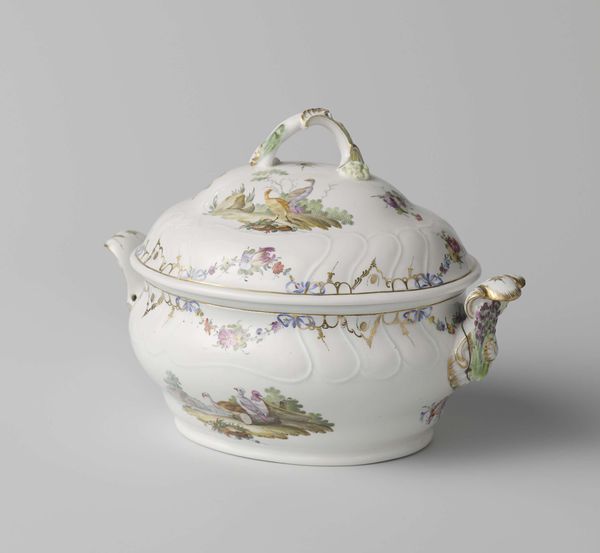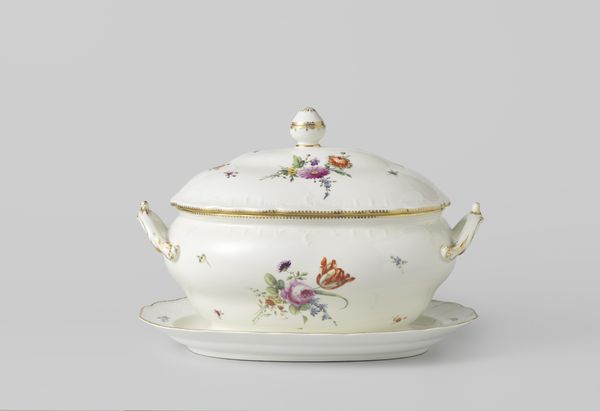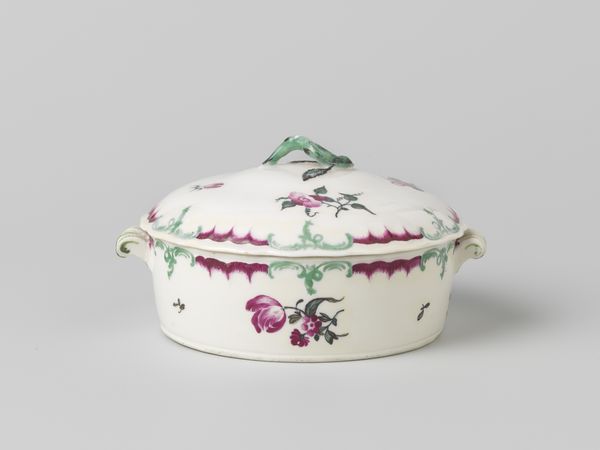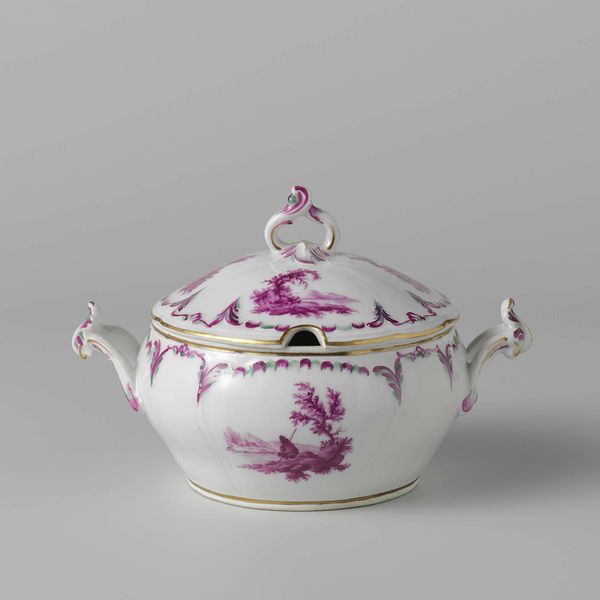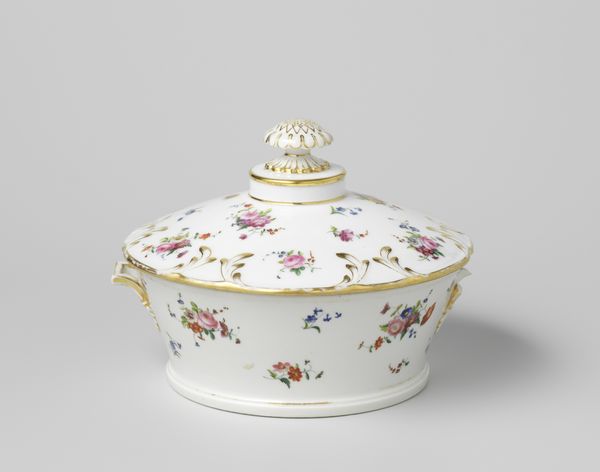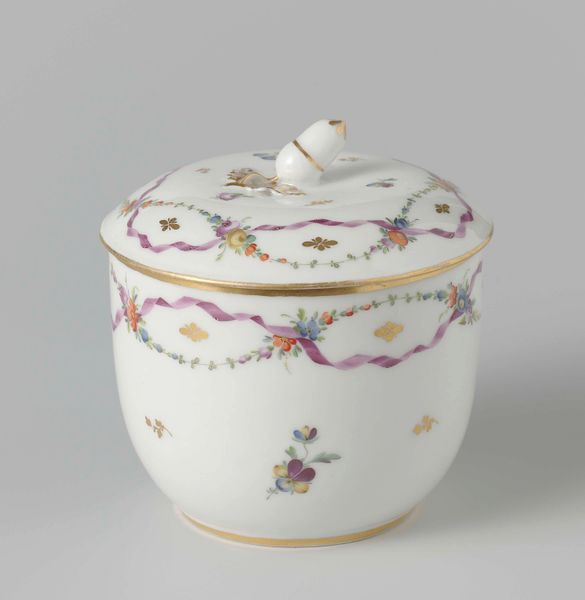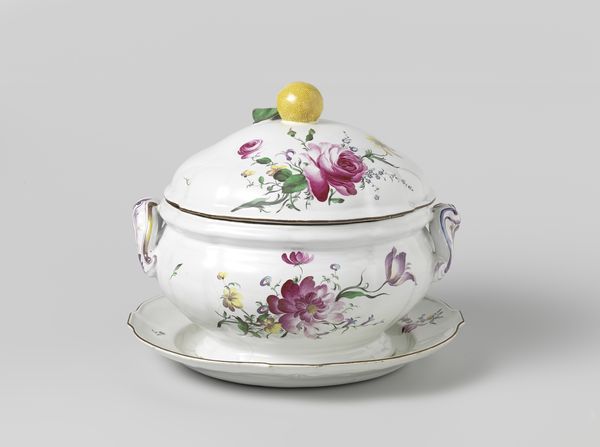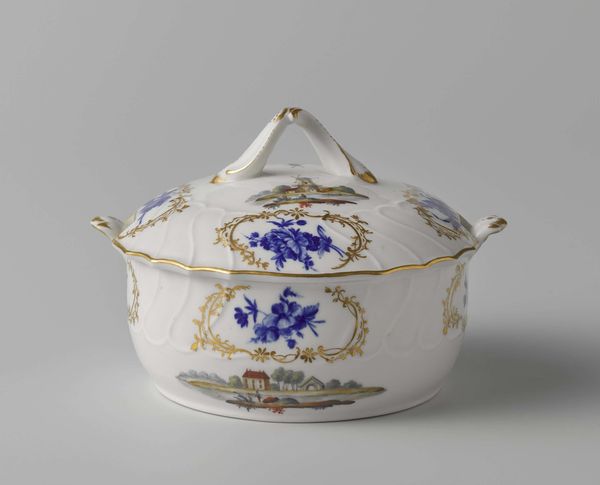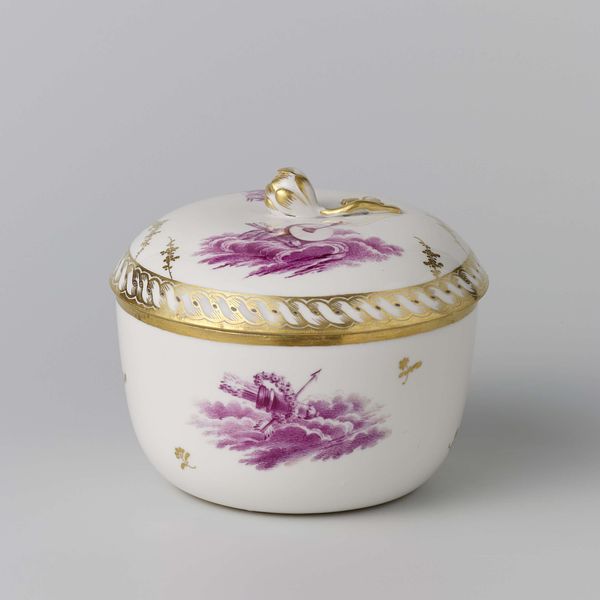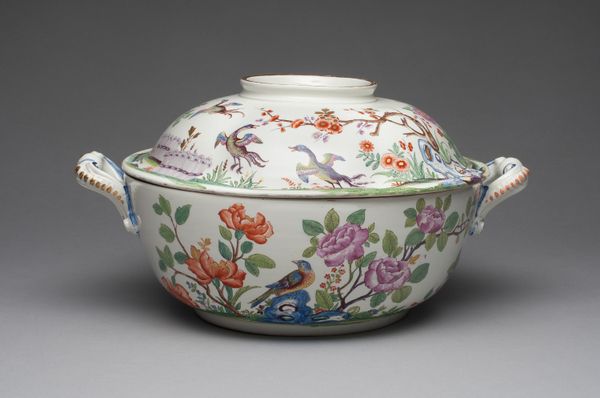
Dimensions: height 4.8 cm, height 6.6 cm, width 13.5 cm
Copyright: Rijks Museum: Open Domain
Curator: Welcome. Here we have a piece titled "Schaal met deksel," or "Bowl with Lid" made of porcelain around 1774-1784 at the Loosdrecht porcelain factory. Editor: Oh, it’s lovely! My immediate impression is how delicate yet substantial it seems. The curves are soft, and the painted flowers offer an element of luxury and beauty to the simple shape. It makes me think of tea parties and opulent meals enjoyed in the company of powerful elites during the Dutch Republic. Curator: Indeed. Its form exhibits strong Rococo sensibilities, doesn't it? Consider the asymmetrical floral designs, and those delightful feet—note the almost organic feel of the handle, like a burgeoning outgrowth from the main body. These are decorative gestures typical of the period, aren’t they? The painted blooms further highlight its sophisticated ornamentation, enhancing the complexity of its visual rhythm through colour play and detail. Editor: Exactly. And for whom was this crafted? It is not solely ornamental. This porcelain reflects cultural dialogues surrounding taste, class, gender and wealth—perhaps as a signal to display ownership and refined sensibilities, particularly for women, who were tasked with household activities, entertaining and supervising social interactions. What sort of conversations took place over this bowl? What anxieties or expectations was the user carrying during a particularly restrictive time for gender and race across the empire? Curator: That’s a fascinating point. From a strictly design standpoint, though, the bowl demonstrates incredible craftsmanship. Porcelain production during this time demanded specialized skill. The very purity of the white glaze establishes a foundation on which this artistic expression blossoms. Notice how the application of pigment enhances a contrast in visual tension, almost like the flower forms float against its pristine plane. Editor: Precisely! This bowl isn’t merely about artistic talent, it mirrors the prevailing attitudes of power. It demands we understand this history. When contemplating this vessel we must not exclude that. Curator: Well said. Reflecting upon both technique and the deeper cultural narratives undoubtedly enriches one’s viewing experience. Editor: Yes, it is important to critically interrogate all elements to foster dialogue and deeper connection with cultural shifts in our shared global society.
Comments
No comments
Be the first to comment and join the conversation on the ultimate creative platform.

